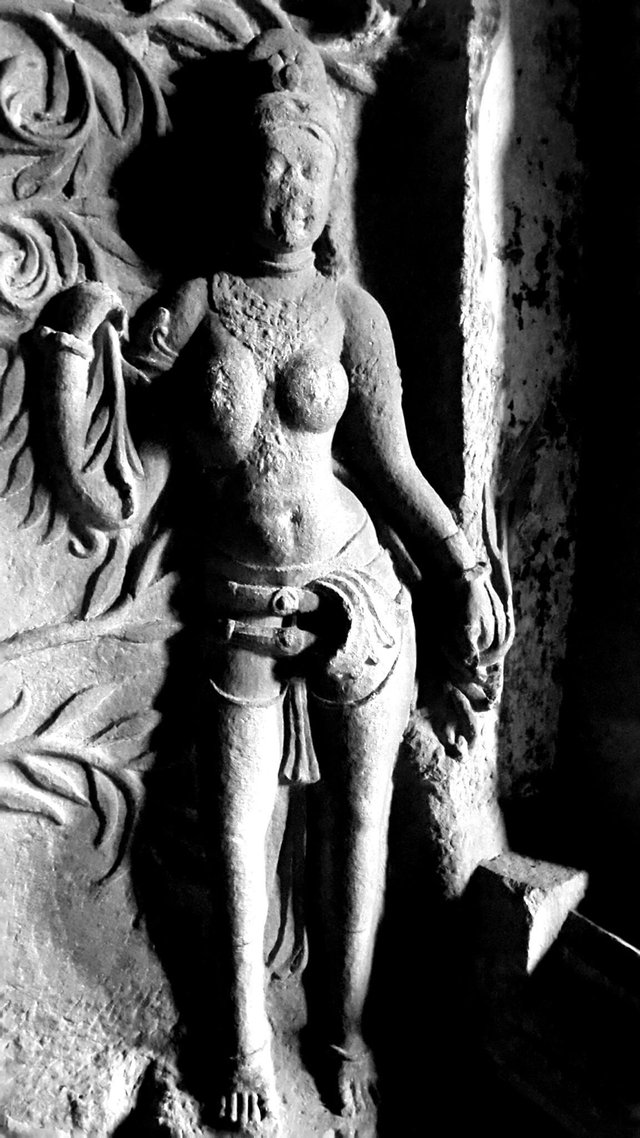Photography: Ellora Caves #7

The flow of lines on this stunning sculpture bring to life the fluidity inherent in the cosmos that sustains all life. The symbolic nature of Indian art is, by design, intended to awaken specific essential universal attributes that are the building blocks of all existence. These essences are considered like shadows of the divine. The Indian aesthetic system is one of the most comprehensive and rich gifts given to humankind. The term "rasa" is used to define these essential attributes. They translate to foundational experiences we all know such as; heroic, erotic, comedic, devotional, horrific etc.
Traditionally, when you study the arts in India, you study the rasa system that can translate to painting, sculpture, music, poetry, dance, drama and architecture. When you have mastered the rasa system you should then be able to truely express these pure attributes, not polluted by ones own ego or individual tarnishings. This is the goal of aesthetic expression in traditional Indian art.
Every aspect of the Ellora caves, whether Buddhist, Hindu or Jain, follows this well defined order of expression. Every attribute of human existence is represented here. These caves are like a rosetta stone of all potentialities that intertwine with the divine. It's the ultimate depository of 'as above - so below'.
In modern times art leans towards individual expression, especially in the west. But this approach towards a universality is still found, although rarely taught. If you study classical Indian music, for example, you will find the raga and tala system is based on rasa. In the west the Jungian artists, as spearheaded by Dane Rudhyar, are an example of a return to such an archetypal approach. Our own steemian @nadversion56 also facilitates a direct intuitive approach that bridges the inner and outer life. Her art echoes the same fluidity of this beautiful sculpture pictured above.